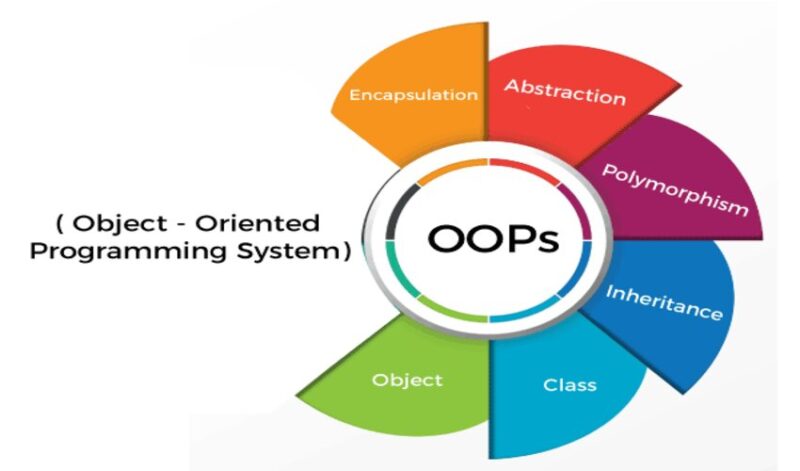It’s difficult to recall a time when people employed any other approach to software development because object-oriented programming is such an essential component. However, when objected-oriented programming, also known as OOP, first emerged in the 1980s, it represented a significant advancement over the conventional top-down approach.
OOP is used for the majority of major software development today. You can’t develop mobile software without knowing about the object-oriented approach, thanks to the widespread use of languages like Java and C++. Given the popularity of OOP languages like Python, PHP, and Ruby, web development follows suit. However, many developers begin with top-down languages like JavaScript or Visual Basic.
You may be accustomed to breaking down large problems into smaller ones, solving each one in its unit of code. Alternately, functional programming, which treats elements of code as precise mathematical functions and prevents them from affecting other elements (i.e., there are no side effects), maybe something you’re familiar with. But once you get the hang of OOP, you’ll see that it offers a completely new approach to problem-solving.
Classes are created rather than programs in OOP. Data and functions make up a class. An object, which represents an instance of that class, is created whenever you want to create something in memory. As an illustration, you can declare a Customer class that stores functions and customer data. Create a new Customer class object if you want your program to store a customer in memory.
This kind of encapsulation is what gives object-oriented programming its advantages. A look at some of OOP’s greatest advantages:
Modularity for simpler troubleshooting
When working with object-oriented programming languages, you are aware of exactly where to look in the event of a problem. Goodness, the vehicle object stalled? The issue must be in the Car class, it seems! You don’t have to go through all of your code line by line.
The beauty of encapsulation is that. Each piece of functionality acts independently of the others, making objects self-contained. Likewise, this measured quality permits an IT group to chip away at various articles at the same time while limiting the opportunity that one individual could copy another person’s usefulness.
Code Re-usage Via Inheritance
Imagine that one colleague requires a RaceCar object and another requires a Limousine object in addition to your Car object. Everybody builds their objects in their unique ways, but they all share some characteristics. Each object is merely a distinct model of a car. The inheritance method saves time in this area: Next, define the subclasses, RaceCar and Limousine, that will inherit the characteristics of the generic class, Car. One of the main reasons we should learn object-oriented programming is because of this.
Naturally, RaceCar and Limousine still possess distinctive features and functions. Each class could implement its functions if the RaceCar object needs a way to “fireAfterBurners” and the Limousine object needs a chauffeur. However, your inheriting classes can simply reuse existing code rather than writing these functions from scratch because both classes inherit key aspects from the Car class, such as the “drive” and “fillUpGas” methods, respectively.
What happens if you want to modify all Car objects, regardless of their type? Another advantage of the OOP method is this. If you make a change to your Car class, the new code will simply be passed on to all car objects.
Elasticity Via polymorphism
Taking this example as an example, you only require a few drivers—or functions—such as “driveCar,” “driveRaceCar,” and “DriveLimousine.” RaceCar drivers and limousine drivers share some characteristics, but race helmets and beverage sponsorships are unique.
Polymorphism in object-oriented programming comes into play in this situation. You could even have “limo. drive(my chauffeur)” or “raceCar.drive(myRaceCarDriver)”
Actual Issue Resolving
OOP seems to have a steeper learning curve than top-down programming, so many people avoid it. In the end, object-oriented programming is all about breaking down a big problem into smaller ones that can be solved. You create a class that fulfills your requirements for each mini-problem. Best of all, you can then reuse those classes, accelerating the resolution of subsequent issues. Consequently, you must acquire object-oriented programming skills.
This does not imply that OOP is the only approach to software development. But there is a reason why serious software development prefers to use languages like C++, C#, and Java.

Aimee Garcia is a senior editor at ReadDive. She has 5+ years of experience in Digital Marketing. She has worked with different IT companies.





